Taking Better Photos of Your Garden: Guest Post by Ted Dillard…
Of all the questions and comments I receive via this blog, email and through this site’s Facebook Page, the most common by far are related to photography. I am a new, amateur photographer, (that is a nice way of saying that I have no idea of what I am doing), and when I have questions about how to take better photographs or what equipment to buy, or how to use it, I usually consult with my professional photographer friends. And, I am very lucky, because one of my dearest friends just so happens to be the brilliant photographer Ted Dillard. Accomplished artist, teacher, and author, Ted is also remarkably generous with his time and talents.
Taking a good photograph is not only a pure pleasure, but it is also a valuable skill – and it needn’t be difficult. So, here to provide us with a few expert tips is the multi-talented Ted Dillard. For further reading, I highly recommend Ted’s series of books for the digital photographer.
Thank you Ted Dillard !
Ted’s Top Ten Twelve Tips for better (Garden!) Photographs
It’s funny, for all the times I’ve been asked what the best camera is to buy, I think I can count on one hand the times someone as asked, “How can I take better pictures?â€Â For one thing, it’s not a simple answer, it depends so much on so many intangible things. The funny thing is, though, the impact of the photographs ultimately has very little to do with the choice of camera.
That said, there are some pretty universal tips that almost any photographer should keep in mind, and even the most experienced of us occasionally overlook. Whether you’re taking photographs of your kids, your vacation, or your cherished gardens, or a commercial assignment, these are some basic suggestions you should always keep in mind. After we cover the basics, I’ve added a few especially for the gardeners.
1. It takes light to make a photograph.
Back in the days of film, we were always trying to “push†the ISO- overdeveloping the film to compensate for underexposing it. It dawned on me one day that you do, in fact, have to have some light hit the film, or the sensor, to make a photograph. Photograph means, from the Latin, “picture from light†after all…
Add light, wait for light, turn the lights on, whatever you need to do to avoid shooting in the dark. Even with cameras rated at ISO 3200+, you still need some light to make the photograph. Without going into the technical details of it, even new cameras with astronomical ISO settings are essentially starting with very little information, or image data, and stretching it out, making “holes†as they go. Think “pizza dough†here.
2. Hold the camera steady.
You can have the best optics ever made, but if the camera is moving then the image is moving on the sensor, even just a little bit. Get a good tripod, and by that I mean a good BIG tripod. Tripods need mass to fight vibration and movement, if your tripod is too light and too small it’s just going to blow in the wind. Literally. The closer you shoot to your subject, the more important this is, and if you’re shooting blossoms that’s pretty darned close.
3. Put your money into the lens.
For the most part, whatever is catching the image, whether it’s film or a sensor, it is designed to capture what the absolute best lens made for it can produce. You want to see what your camera can do? Give it the best lens you can afford, and it will thank you. A great lens on a cheaper sensor is like running a car at it’s optimum tuning- you won’t be able to see what it can do until you set it up right. A great sensor with a cheap lens is like driving your car dragging a piano. For shooting close-up, or macro, there’s nothing in the world so sweet as a true “macro†lens- a lens designed to focus at inches away from the subject.
4. Clean your lens.
The biggest enemy of clarity, sharpness and contrast in a photograph is lens flare. Fingerprints, dirt, dust on a lens is the single best way to make lens flare happen. Seen the iPhone “Vaseline effect� That’s what happens when you try to take a picture through a lens with a big smudgy peanut butter fingerprint, and that’s what I’m talking about. It doesn’t matter if you’re shooting with your phone or the most expensive digital camera. The lens has to be clean.
5. Shade your lens.
One more time- the biggest enemy of clarity, sharpness and contrast in a photograph is lens flare. Light hitting the lens glass directly, whether it’s the sun, or just reflections of bright objects nearby, are the second best way to create lens flare. Almost every technological development in lens design in the past 50 years had been to combat and minimize lens flare, and the single most effective way to eliminate it is to use the most basic tool. A lens shade.
I can’t overstate this simple point. I see it constantly, people even shooting with a built-in lens shade and not using it. For some reason it seems like it doesn’t matter, and people just don’t bother with it. It does matter. If the sun is hitting your glass, or even any bright light source- the sky, snow, reflections from other objects- it will degrade the quality of your photograph. Shade that lens.
6. Look at the light. Wait for the light. Control the light.
A good photographer sees and controls the light, many novice photographers seem to think they’re at the mercy of “available†light. Even if it means waiting an hour for the sun to go down, moving a reflector in to open up some shadows, or bringing in an entire studio of artificial lighting equipment, you’re always either in control if the light, or at the mercy of it. “Photographers are painters who paint with light.†(Richard Brautigan)
Learning to work with available light, and control artificial light is probably one of the most challenging yet rewarding things you can work with to improve your photographs… and it’s a lifelong challenge, but one of the most rewarding in all of photography.
7. Background. It’s all about the background.
When you’re taking pictures you often see your subject with tunnel vision. You focus on, and just see what you’re looking at and not what’s behind it. Slow down and look for a few of the typical big distractions- strong shapes, bright colors, things that don’t separate from the subject. (Hint: using a large aperture -lens wide open, f2.0 for example- makes things in the background go out of focus, blurring backgrounds and diminishing distractions, but more on that later.) Once you have your subject framed, and you’re ready to snap the picture, stop yourself and look at the background.
8. Compose the photograph.
Again, with the tunnel vision. When most people look through a viewfinder they’re seeing what they want to take pictures of. You need to see the picture, instead of what you’re taking the picture of. The whole picture. You know how you always see shots of the baby, the dog, Grammy, and they’re smack in the middle of the picture, I mean dead center? That’s what I’m talking about.
Look at the whole frame, look at what you can include and what you can eliminate to make an interesting composition. Control the viewer’s eye.
9. If in doubt, take more pictures.
My Dad used to say, out of all the money you’ve spent on everything, film is cheap. There’s no excuse for not shooting enough film. Now that we’re shooting pixels, there’s even more truth to that. Try different angles, different distances, even just try shots that you don’t think work. If you think you have the shot, that’s the time to force out a few more frames. I can’t tell you how many times the best shots were in those last few, after you think you’ve got the shot, but just want to try some options to “see what happensâ€.
10. Take more pictures anyway.
See above.
My Grandfather was speaking once, showing his photographs to a Boston Camera Club group. He got the question, “How did you know that would make a great photograph, and how did you know how to shoot it so you’d capture it so beautifully?â€Â His answer- from taking shot after shot after shot, for years and years… experience. Nothing can make up for taking the pictures. And he was shooting with a big old view camera with film that came in sheets. One shot at a time.
Take more pictures. If nothing more than to give yourself more experience, more of a foundation to work with.
That’s the basic list, but here are a few more tips just for you gardeners…
One of the secrets to making great photographs of blossoms and blooms is in controlling your “depth of fieldâ€. This is a photography term simply referring to how much of your image is in focus. Typically, flower and plant close-up shots have a shallow depth of field, or, simply, not much other than the subject itself is in crisp focus. This is something that you control with your lens opening, (also called f-stop or aperture). The smaller the lens opening, f22, for example, the more depth of field, and most of the frame will be in focus. The larger the opening, f3.5, for example, (and yes, bigger openings are smaller f numbers), the shallower the focus. Take a look at this post, linking to a great Wikipedia explanation and demonstration of the effects of different lens openings.
It’s a great start to beginning to visualize what happens when you control the aperture. Keep in mind, you have to balance the lens opening and the shutter speed to get a perfect exposure. Open up the lens, you have to shorten the shutter speed, and vice-versa. Using the Auto Exposure setting “Aâ€, for aperture priority, you can select a large aperture and let the camera adjust the shutter speed accordingly.  Probably the simplest way to start to understand this is simply to put the camera on a tripod, focus on your favorite blossom, and switch the camera to “A†mode. Set the aperture from one extreme (wide open, probably f2 or 3.5) to the other (full stop, f16 or 22) and look at the results on your computer. It’ll be pretty obvious what’s happening.
The other bit of advice- use a camera that has these controls. I know I said that the camera doesn’t matter so much, and that’s true, but if you are running a camera that allows you this kind of control- selection of exposure modes, and even manual focus and exposure, then it makes things a lot easier. I’d recommend almost any Digital SLR, or “DSLRâ€. The good news is, you can get into a system like that for little over $500, and we have several reviews of cameras like this at our Head-2-Head Reviews site. One of my favorite matchups is the Nikon D5000 and the Canon T1i– (I ended up with the Nikon for myself… LOVE that camera, and it uses all my old Nikon lenses.)
A little side note, and a step down the notorious (digital) primrose path… If you do go with a camera like any of these DSLRs, chances are you’ll have the option to shoot “RAW†files instead of JPEG format. If you’re interested in getting the absolute most out of your camera, RAW files take you to the next level of image quality. You need to use a program like Adobe’s Photoshop, Photoshop Elements, or Lightroom to take full advantage of the RAW file, but it will make a world of difference it the end result. My book RAW Pipeline is a great overview of getting started with shooting and processing RAW.
There you have it. It’s a start, and hopefully these little tips will help you make better photographs. Don’t for a second think that almost every pro photographer who’s reading this isn’t, at one point or another saying to themselves, jeesh, I know, I should try harder to do that all the time…
***
Article and Photographs in this feature are © Ted Dillard, all rights reserved.
For further information about photographer and teacher Ted Dillard, please visit his website:
Ted Dillard – Support for the Digital Photographer
***
Thank you Ted, for all of your generous help, support and advice !
All content on this site, (with noted exceptions), is © The Gardener’s Eden. All rights reserved.
All Site Photography Is Taken With Canon Powershot G Series Cameras from Amazon.com
***
4 Replies to “Taking Better Photos of Your Garden: Guest Post by Ted Dillard…”
Comments are closed.

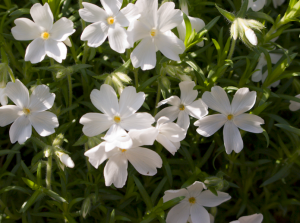
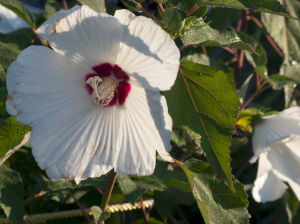
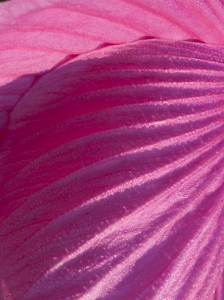
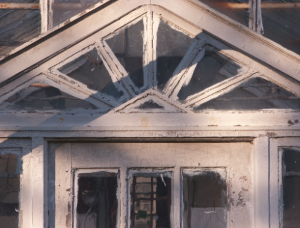

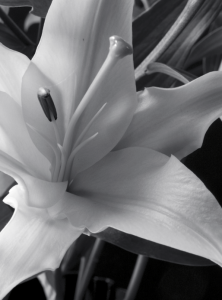
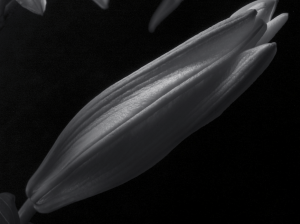




I was searching for information on lenses for my canon 500D when I found your site. Great post. Thank You.
Your blog is so informative … keep up the good work!!!!
Thank you for this guest post. I’m building a website for a local greenhouse/garden center, and would love to get some shots of the beautiful plants they carry. I’m just learning photography, and am fortunate enough to have a very dear friend who is lending my daughter her “old” camera – a Canon EOS 30D with a 70-300MM zoom lens with stabilizer. I have another lens for close-up shots and can’t wait to try it out. I appreciate these tips, especially the one about using the lens hood!